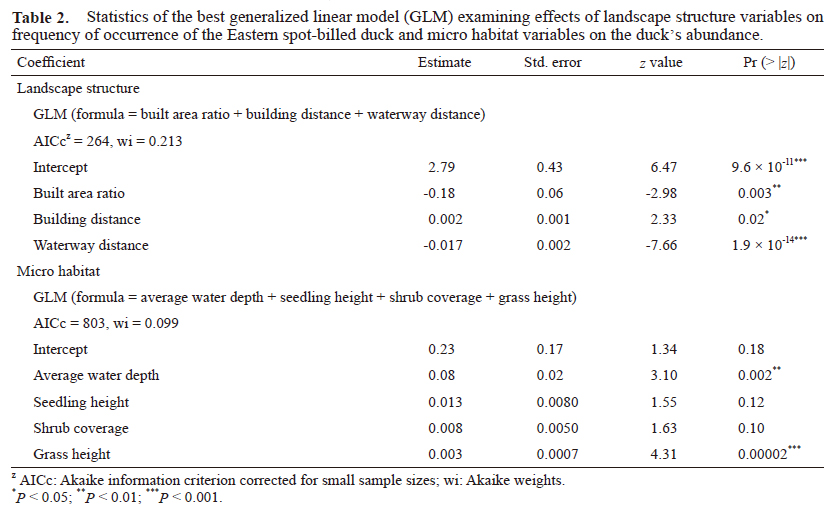All issues

Author:Mei-Jhu Hong, Shih-Han Hsu, Shin-Han Tseng, and Chao-Nien Koh*
Abstract:
Taiwan is an important winter spot for waterbirds. Among them, the eastern spot-billed duck (Anas zonorhyncha Swinhoe) migrates to Taiwan for a large amount from autumn to winter every year. However, area of natural wetlands in Taiwan is decreasing, and many ducks coming to Taiwan for winter turn to use rice paddies. Recently, rice paddies have become a shelter for the eastern spotbilled duck in winter, in addition to the purpose of food production. However, the ducks are not welcomed or even driven by farmers because they affect the growth of rice. At present, there is a lack of friendly method to manage both rice paddies and the ducks. The purpose of this study is to explore ways to mitigate conflicts between rice farmers and the ducks based on the duck’s habitat use. It is hoped that rice paddies serve the dual purpose of providing food production and functioning as manmade wetlands that harbor the ducks. In February 2020, we surveyed 212 paddy fields used by the ducks in the rice transplanting period around Xiuguluan River in Hualien County. Data of 9 landscape structure variables and 8 microhabitat variables were collected for each of the fields. It was found that the eastern spot-billed duck chose a rice paddy closer to the river or near the irrigation channel, possibly to save energy on flying between foraging and resting sites. In addition, the ducks seemed to avoid buildings and chose a site with a low built area ratio, which might reflect the pressure of human interference. From the perspective of micro habitat choice, the ducks may choose the paddy field covered by higher grass, and it was found that the most commonly chose grass height around the paddy field was 20–40 cm. This choice may also be related to human interference. Water depth is another important determining factor. The number of the ducks gradually increased with the increasing water depth of the rice paddy during the transplanting period, and 3–6 cm was the most frequently visited water depth range. Based on the result of the preference of the ducks on the paddy field, it suggests that paddy fields cultivated during the winter, kept the water depth below 3 cm during the seedling transplanting period, and maintained surrounding vegetation height below 20 cm would reduce the utilization of paddy fields by the duck. Paddy fields adjacent to Xiuguluan River or irrigation channels with a width greater than 3 m are suggested suitable for waterbird protection. It is recommended the government to consider providing subsidies on waterbird protection in this area so as to encourage the rice farmers to manage their paddies in a duck-friendly way.
Key words:Landscape ecology, Farmland ecosystem, Irrigation channel, Human disturbance, Water depth
Download:![]() PDF Links
PDF Links
- 1. Development of Tractor-Mounted Seedling Transplanter for Sweet Potato
- 2. Synergistic Effect of Additional Gas on the Toxicity of Phosphine to Sitophilus oryzae and Sitophilus zeamais (Coleoptera: Dryophthoridae)
- 3. Effects of Temperature and Solar Radiation on Growth Traits and Plant Elements in Purple Leafy Sweet Potato
 Submit your manuscript
Submit your manuscript
 Guide for authors
Guide for authors